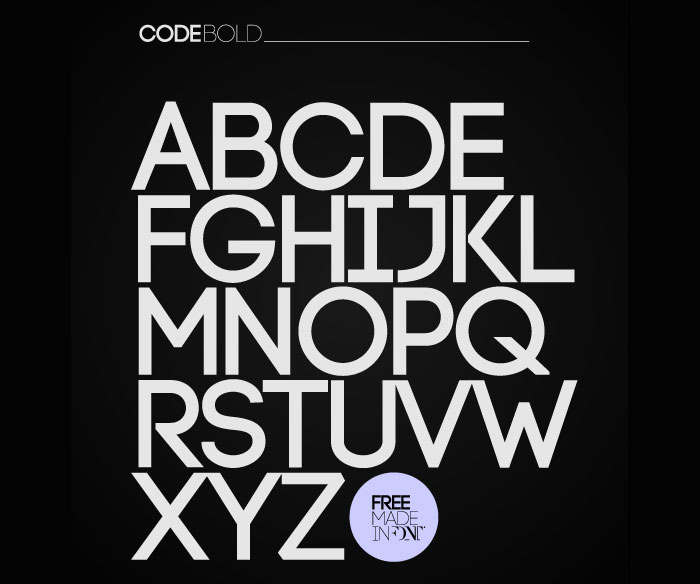
Graphic Bold Font
The word 'Schriftbild' in five different typefaces ('fonts'). In metal typesetting, a font was a particular of a. Each font was a matched set of type, one piece (called a ') for each, and a typeface consisting of a range of fonts that shared an overall design. In modern usage, with the advent of, 'font' is frequently synonymous with 'typeface'. Each style is in a separate 'font file'—for instance, the typeface ' may include the fonts 'Bulmer ', 'Bulmer ', 'Bulmer ' and 'Bulmer extended'—but the term 'font' might be applied either to one of these alone or to the whole typeface.
Geom Graphic is square geometric sans serif for wide range of usage. The family give an impression similar to Eurostile but this is more squared and geometric. The letterforms of Geom Graphic are designed slightly rounded to appear natural, warm and retro. Feb 20, 2019 - In this freshly updated free fonts for designers post, we bring you the world's best free fonts. Harvest moon a wonderful life special edition ps2 iso download. 20 fonts every graphic designer should own.
Fishing bot by mr sergey klyuch movie. May 23, 2013 Ultimate Fishbot is a completely free World of Warcraft bot that does the fishing for you. It does not modify the game or require any sort of special additions so you do not have to worry about getting in trouble with Blizzard. Mar 01, 2017 Hello folks,i'm looking for a fishing bot for Legion,anyone knows one? - best fishing bot - best fishing bot Hat denn schon jemand getestet, kann man. Originally Posted by mrsergey - best fishing bot. Hat denn schon jemand getestet, kann man denn nehmen?, 17:31 #5: mrsergey elite*gold: 0. The Black Market: 0 /0/ 0.
In both traditional typesetting and modern usage, the word 'font' refers to the delivery mechanism of the typeface design. In traditional typesetting, the font would be made from metal or wood. Today, the font is a digital file. Contents • • • • • • • • • • • • • • • Etymology [ ] The word font (traditionally spelled fount in, but in any case pronounced ) derives from fonte '[something that has been] melted; a '. The term refers to the process of casting metal type at a.
Metal type [ ] In a manual printing () house the word 'font' would refer to a complete set of that would be used to an entire page. Upper- and lowercase letters get their names because of which case the metal type was located in for manual typesetting: the more distant upper case or the closer lower case. The same distinction is also referred to with the terms majuscule and minuscule. Unlike a digital typeface, a metal font would not include a single definition of each character, but commonly used characters (such as vowels and periods) would have more physical type-pieces included. A font when bought new would often be sold as (for example in a Roman alphabet) 12pt 14A 34a, meaning that it would be a size 12- font containing 14 uppercase 'A's, and 34 lowercase 'A's. The rest of the characters would be provided in quantities appropriate for the of letters in that language.

Some metal type characters required in typesetting, such as, spaces and line-height spacers, were not part of a specific font, but were generic pieces which could be used with any font. Line spacing is still often called ', because the strips used for line spacing were made of (rather than the harder alloy used for other pieces). The reason for this spacing strip being made from 'lead' was because lead was a softer metal than the traditional forged metal type pieces (which was part lead, antimony and tin) and would compress more easily when 'locked-up' in the printing 'chase' (i.e. A carrier for holding all the type together). In the 1880s–1890s, 'hot lead' typesetting was invented, in which type was cast as it was set, either piece by piece (as in the technology) or in entire lines of type at one time (as in the technology). Characteristics [ ] In addition to the character height, when using the mechanical sense of the term, there are several characteristics which may distinguish fonts, though they would also depend on the (s) that the typeface supports. In European, i.e., and, the main such properties are the, the and the.
The regular or standard font is sometimes labeled roman, both to distinguish it from bold or thin and from italic or oblique. The keyword for the default, regular case is often omitted for variants and never repeated, otherwise it would be Bulmer regular italic, Bulmer bold regular and even Bulmer regular regular. Roman can also refer to the language coverage of a font, acting as a shorthand for 'Western European'.
Different fonts of the same typeface may be used in the same work for various degrees of readability and, or in a specific design to make it be of more visual interest. Weight [ ] The weight of a particular font is the thickness of the character outlines relative to their height. Weights A typeface may come in fonts of many weights, from ultra-light to extra-bold or black; four to six weights are not unusual, and a few typefaces have as many as a dozen. Many typefaces for office, web and non-professional use come with just a normal and a bold weight which are linked together. If no bold weight is provided, many renderers (browsers, word processors, graphic and DTP programs) support faking a bolder font by rendering the outline a second time at an offset, or just smearing it slightly at a diagonal angle. The base weight differs among typefaces; that means one normal font may appear bolder than some other normal font. For example, fonts intended to be used in posters are often quite bold by default while fonts for long runs of text are rather light.